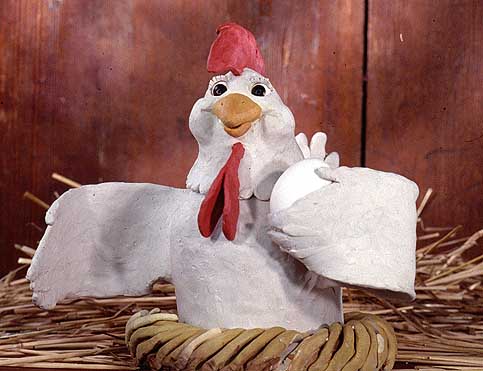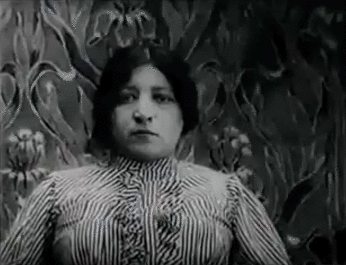|
Misi Mókus Kalandjai
''Misi Mókus kalandjai'' (lit. The Adventures of Misi, the squirrel) is a Hungarian stop motion animated series, an adaptation of books by Józsi Jenő Tersánszky. The TV series was produced by The Pannonia Film Studio and broadcast on Magyar Televízió Magyar Televízió (, ''Hungarian Television'') or MTV is a nationwide public television broadcasting organization in Hungary. Headquartered in Budapest, it is the oldest television broadcaster in Hungary and today airs five channels: M1 HD, ... in 1982. In 1984, a film, , was produced based on the television series. Premise The series follow the adventures of Sam the squirrel (Simi, in the original version) who hates studying. Episode list References External links * 1982 Hungarian television series debuts 1982 Hungarian television series endings Stop-motion animated television series Television shows based on children's books Hungarian animated films Hungarian-language television shows Adventure televi ... [...More Info...] [...Related Items...] OR: [Wikipedia] [Google] [Baidu] |
Ottó Foky
Ottó Foky (June 15, 1927 – September 3, 2012) was a Hungarian animator. He was born in Sárhida. Films Director *Egy világhírű vadász emlékiratai (1968–70) *A kiscsacsi kalandjai (1971) * Mirr-Murr, a kandúr (1972–75) *Makk Marci mesél (1973) * Babfilm (Scenes with beans, 1975) * A legkisebb Ugrifüles (1975–76) *Makk Marci (1977-1978) *Varjúdombi mesék (1978–79) *Misi mókus kalandjai ''Misi Mókus kalandjai'' (lit. The Adventures of Misi, the squirrel) is a Hungarian stop motion animated series, an adaptation of books by Józsi Jenő Tersánszky. The TV series was produced by The Pannonia Film Studio and broadcast on Magy ... (1980–81) * Süsüke, a sárkánygyerek (2000) Notes External links * 1927 births 2012 deaths People from Sárhida Hungarian animators Hungarian animated film directors {{animator-stub ... [...More Info...] [...Related Items...] OR: [Wikipedia] [Google] [Baidu] |
Erzsébet Kútvölgyi
Erzsébet Kútvölgyi (born November 14, 1950) is a Jászai Mari Award and Kossuth Prize-winning Hungarian actress. Filmography *''Misi mókus kalandjai'' as Sammy the Squirrel *''Macbeth'' *''Johnny Corncob'' as the Princess *''The Little Fox'' as fox girl *''A Strange Role'' as Zsófi nővér Theatre credits * 1987: Fantine in the original Hungarian cast of ''Les Misérables ''Les Misérables'' (, ) is a 19th-century French literature, French Epic (genre), epic historical fiction, historical novel by Victor Hugo, first published on 31 March 1862, that is considered one of the greatest novels of the 19th century. '' ...'' References External links * 1950 births Living people 20th-century Hungarian actresses Actresses from Budapest Hungarian stage actresses Hungarian television actresses Hungarian film actresses Hungarian voice actresses {{Hungary-actor-stub ... [...More Info...] [...Related Items...] OR: [Wikipedia] [Google] [Baidu] |
Hungary
Hungary is a landlocked country in Central Europe. Spanning much of the Pannonian Basin, Carpathian Basin, it is bordered by Slovakia to the north, Ukraine to the northeast, Romania to the east and southeast, Serbia to the south, Croatia and Slovenia to the southwest, and Austria to the west. Hungary lies within the drainage basin of the Danube, Danube River and is dominated by great lowland plains. It has a population of 9.6 million, consisting mostly of ethnic Hungarians, Hungarians (Magyars) and a significant Romani people in Hungary, Romani minority. Hungarian language, Hungarian is the Languages of Hungary, official language, and among Languages of Europe, the few in Europe outside the Indo-European languages, Indo-European family. Budapest is the country's capital and List of cities and towns of Hungary, largest city, and the dominant cultural and economic centre. Prior to the foundation of the Hungarian state, various peoples settled in the territory of present-day Hun ... [...More Info...] [...Related Items...] OR: [Wikipedia] [Google] [Baidu] |
Magyar Televízió
Magyar Televízió (, ''Hungarian Television'') or MTV is a nationwide public television broadcasting organization in Hungary. Headquartered in Budapest, it is the oldest television broadcaster in Hungary and today airs five channels: M1 HD, M2 HD, M3, M4 Sport and M5. MTV is managed and primarily funded by the Media Service Support and Asset Management Fund (, abbreviated MTVA). This government organization, formed in 2011, also manages the public service broadcasters Magyar Rádió and Duna Televízió as well as the Hungarian news agency Magyar Távirati Iroda. On 1 July 2015, Magyar Televízió as well as the three other public media organizations managed by the MTVA were merged into a single organization called Duna Médiaszolgáltató. This organization is the legal successor to Magyar Televízió and is an active member of the European Broadcasting Union. History Early years (1954–1969) First pioneer transmissions were in Hotel Gellért in 1936. Test tran ... [...More Info...] [...Related Items...] OR: [Wikipedia] [Google] [Baidu] |
Stop Motion
Stop-motion (also known as stop frame animation) is an animated filmmaking and special effects technique in which objects are physically manipulated in small increments between individually photographed frames so that they will appear to exhibit independent motion or change when the series of frames is played back. Any kind of object can thus be animated, but puppets with movable joints (puppet animation) or clay figures (claymation) are most commonly used. Puppets, models or clay figures built around an armature are used in model animation. Stop motion with live actors is often referred to as pixilation. Stop motion of flat materials such as paper, fabrics or photographs is usually called cutout animation. Terminology The term "stop-motion", relating to the animation technique, is often spelled without a hyphen as "stop motion"—either standalone or as a compound modifier. Both orthographic variants, with and without the hyphen, are correct, but the hyphenated one is th ... [...More Info...] [...Related Items...] OR: [Wikipedia] [Google] [Baidu] |
Animated Series
An animated series, or a cartoon series, is a set of Animation, animated films with a common title, usually related to one another. These episodes typically share the same main heroes, some different secondary characters and a basic theme. Series can either have a finite number of episodes like, for example, miniseries, a definite end, or be open-ended, without a predetermined number of episodes. They can be released on television, in movie theaters, on the internet or direct-to-video. Like other creative works, cartoon series can be of a wide variety of List of genres, genres and have different target audiences: both males and females, both Children's television series, children and adult animation, adults. Television Animated Television show, television series are aired daily or on certain days of the week during a prescribed Broadcast programming#Time slot, time slot, including, for example, saturday-morning cartoons, List of American prime time animated television series, pri ... [...More Info...] [...Related Items...] OR: [Wikipedia] [Google] [Baidu] |
Józsi Jenő Tersánszky
Józsi Jenő Tersánszky (12 September 1888 — 12 June 1969) is a Kossuth Prize The Kossuth Prize (, ) is a state-sponsored award in Hungary, named after the Hungarian politician and revolutionist Lajos Kossuth. The Prize was established in 1936, by the Hungarian National Assembly, to acknowledge outstanding personal and grou ...-winning Hungarian writer. Tersánszky is considered one of the outstanding icons of 20th century Hungarian literature. References 1888 births 1969 deaths People from Baia Mare Hungarian writers Hungarian Roman Catholics 20th-century Hungarian journalists Hungarian children's writers {{Hungary-writer-stub ... [...More Info...] [...Related Items...] OR: [Wikipedia] [Google] [Baidu] |
Pannonia Film Studio
Pannonia Film Studio (also known as MAFILM Pannónia Filmstúdió) was the largest animation studio in Hungary, based in the capital of Budapest. It was formed in 1951, becoming independent in 1957. The studio is said to have closed sometime around 2015. Notable people PannóniaFilm's roster of notable animators includes Attila Dargay, Marcell Jankovics, József Gémes, Ottó Foky, Ferenc Rofusz, Gábor Csupó, Sándor Reisenbüchler, István Orosz, Líviusz Gyulai, Dóra Keresztes, and Zsolt Richly. Films Animated short films *''A kiskakas gyémánt félkrajcárja'' ("The Cockerel's Diamond Coin") - Gyula Macskássy, 1951 *''Ceruza és radír'' ("Pencil and India Rubber") - Gyula Macskássy-György Várnai, 1960 *''A három nyúl'' ("The Three Rabbits") - Attila Dargay, 1972 *''Sisyphus'' - Marcell Jankovics, 1974 *''A légy'' (" The Fly") - Ferenc Rófusz, 1980 Animated series *'' Gusztáv'' ("Gustav" or "Gustavus") - Dargay-Nepp-Jankovics, 1964 *'' Mézga család'' ("Th ... [...More Info...] [...Related Items...] OR: [Wikipedia] [Google] [Baidu] |
1982 Hungarian Television Series Debuts
__NOTOC__ Year 198 (CXCVIII) was a common year starting on Sunday of the Julian calendar. At the time, it was known as the Year of the Consulship of Sergius and Gallus (or, less frequently, year 951 ''Ab urbe condita''). The denomination 198 for this year has been used since the early medieval period, when the Anno Domini calendar era became the prevalent method in Europe for naming years. Events By place Roman Empire *January 28 **Publius Septimius Geta, son of Septimius Severus, receives the title of Caesar. **Caracalla, son of Septimius Severus, is given the title of Augustus. China *Winter – Battle of Xiapi: The allied armies led by Cao Cao and Liu Bei defeat Lü Bu; afterward Cao Cao has him executed. By topic Religion * Marcus I succeeds Olympianus as Patriarch of Constantinople (until 211). Births * Lu Kai, Chinese official and general (d. 269) * Quan Cong, Chinese general and advisor (d. 249) Deaths * Li Jue, Chinese warlord and regent * ... [...More Info...] [...Related Items...] OR: [Wikipedia] [Google] [Baidu] |
Stop-motion Animated Television Series
Stop-motion (also known as stop frame animation) is an animated filmmaking and special effects technique in which objects are physically manipulated in small increments between individually photographed frames so that they will appear to exhibit independent motion or change when the series of frames is played back. Any kind of object can thus be animated, but puppets with movable joints (puppet animation) or clay figures (claymation) are most commonly used. Puppets, models or clay figures built around an armature are used in model animation. Stop motion with live actors is often referred to as pixilation. Stop motion of flat materials such as paper, fabrics or photographs is usually called cutout animation. Terminology The term "stop-motion", relating to the animation technique, is often spelled without a hyphen as "stop motion"—either standalone or as a compound modifier. Both orthographic variants, with and without the hyphen, are correct, but the hyphenated one is the mos ... [...More Info...] [...Related Items...] OR: [Wikipedia] [Google] [Baidu] |
Television Shows Based On Children's Books
Television (TV) is a telecommunication medium for transmitting moving images and sound. Additionally, the term can refer to a physical television set rather than the medium of transmission. Television is a mass medium for advertising, entertainment, news, and sports. The medium is capable of more than "radio broadcasting", which refers to an audio signal sent to radio receivers. Television became available in crude experimental forms in the 1920s, but only after several years of further development was the new technology marketed to consumers. After World War II, an improved form of black-and-white television broadcasting became popular in the United Kingdom and the United States, and television sets became commonplace in homes, businesses, and institutions. During the 1950s, television was the primary medium for influencing public opinion.Diggs-Brown, Barbara (2011''Strategic Public Relations: Audience Focused Practice''p. 48 In the mid-1960s, color broadcasting was introd ... [...More Info...] [...Related Items...] OR: [Wikipedia] [Google] [Baidu] |



